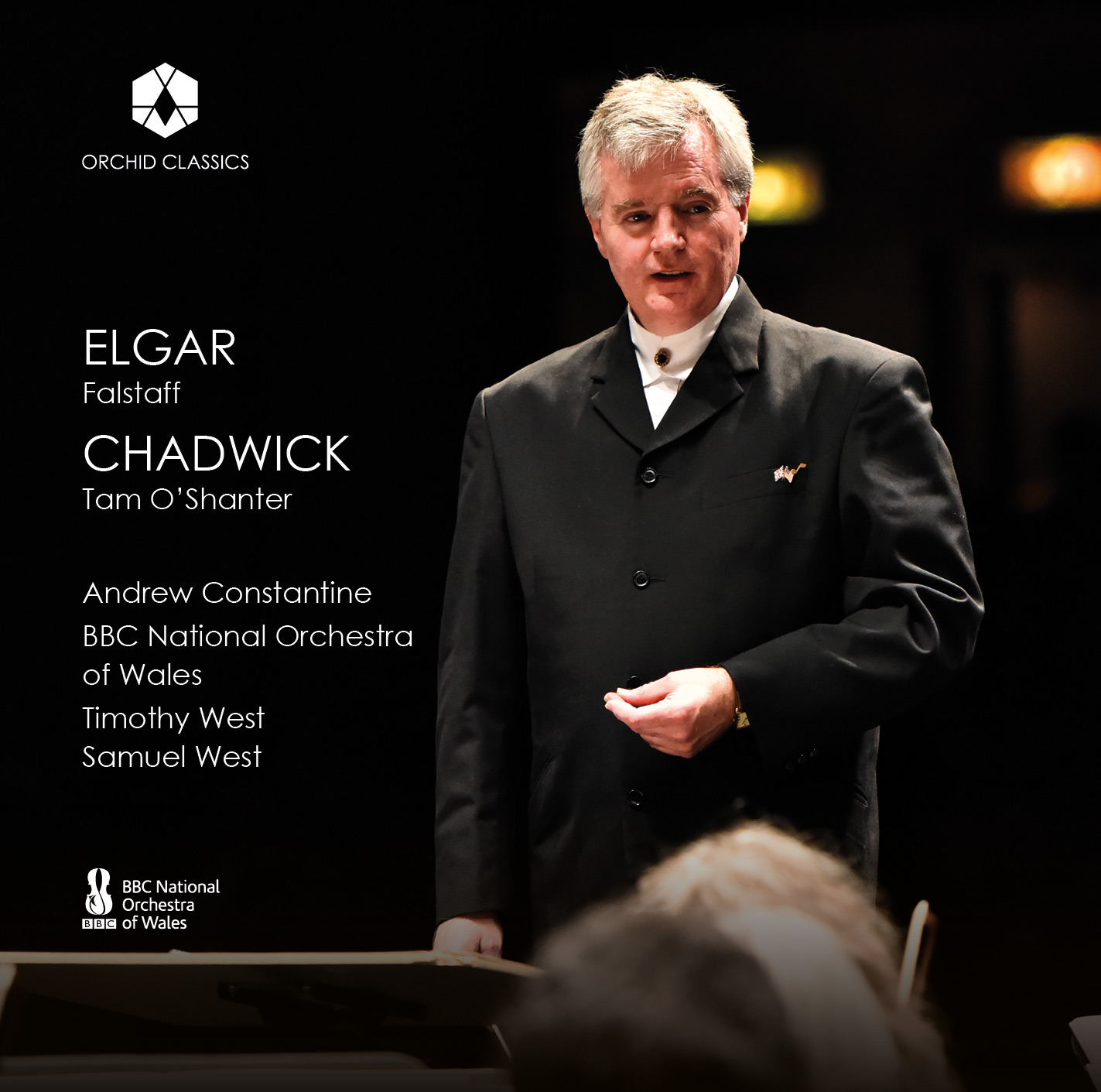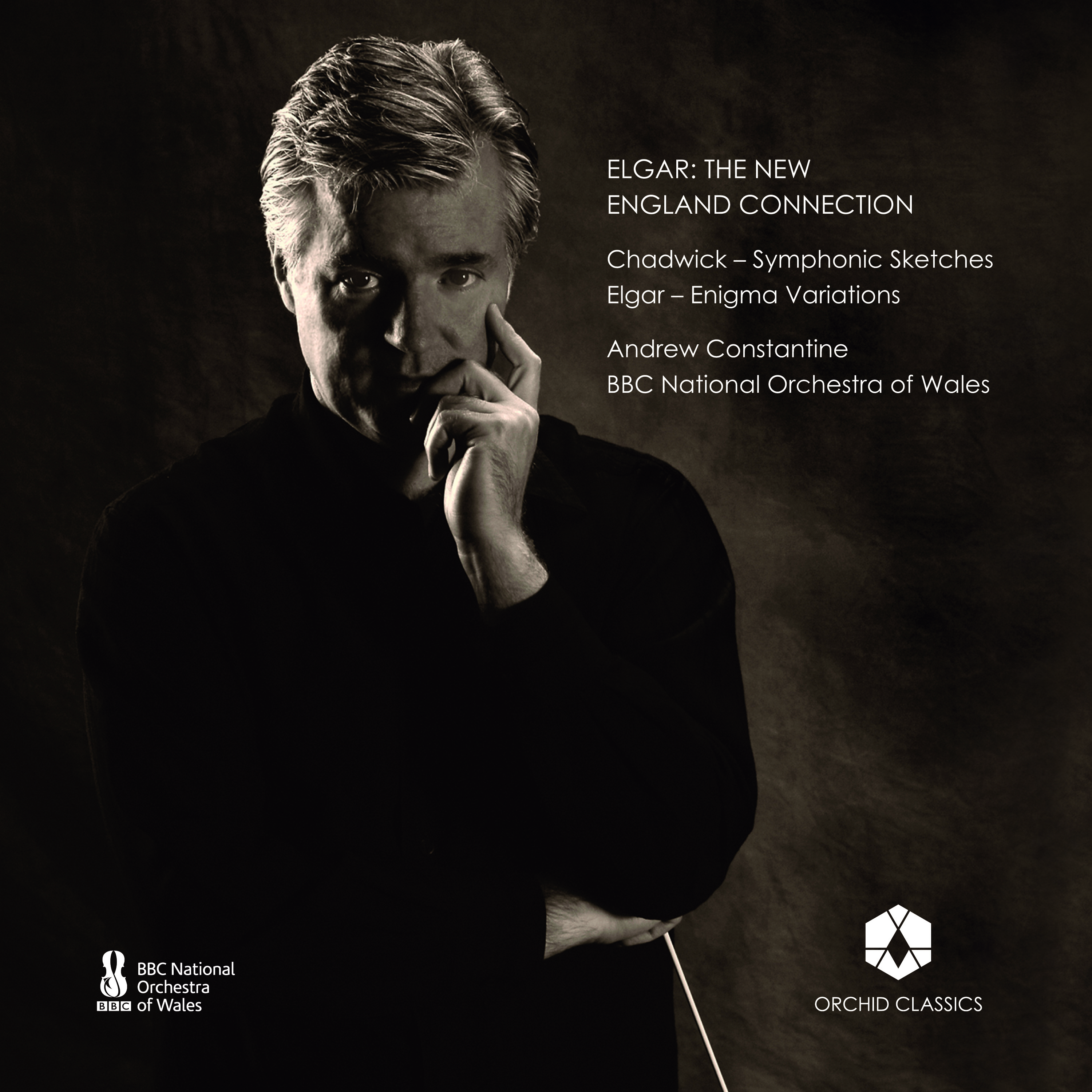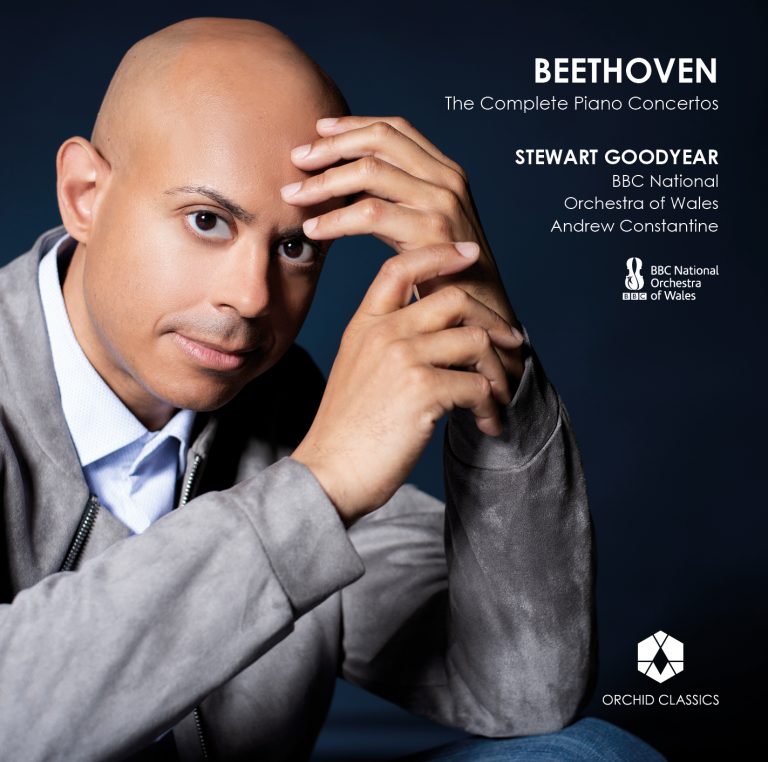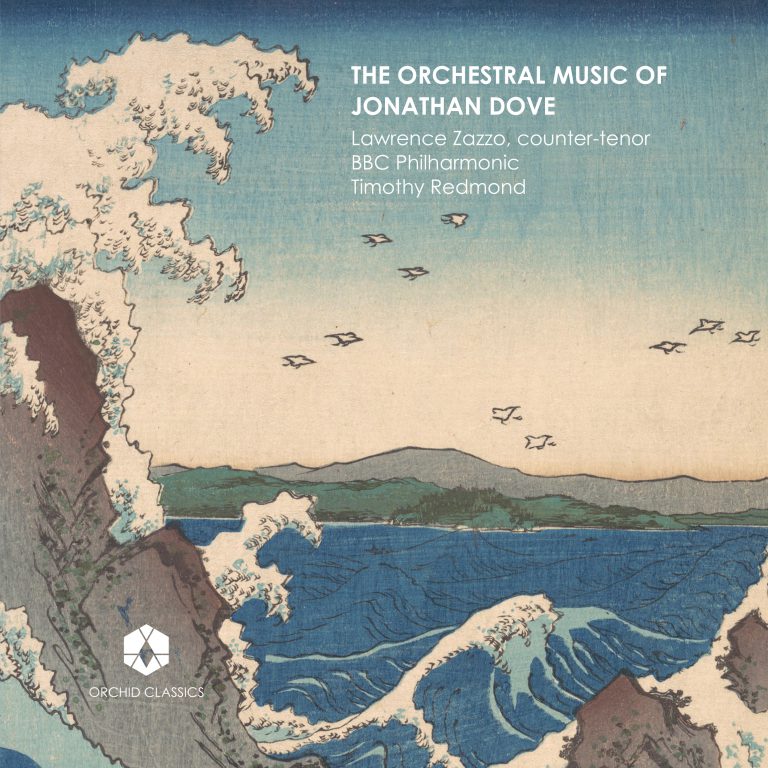Artist Led, Creatively Driven

Falstaff
BBC NOW
Andrew Constantine
Samuel West
Timothy West
Release Date: September 20th 2019
ORC100103
CD 1
Sir Edward Elgar (1857-1934)
Falstaff – Symphonic Study in C minor, Op.68
1 I am not only witty in myself, but the cause that wit is in other men 3.59
2 Falstaff and Prince Henry 3.02
3 What’s the matter? 3.28
4 Eastcheap – the robbery at Gadshill – The Boar’s Head –
revelry and sleep 13.25
5 Dream interlude: ‘Jack Falstaff, now Sir John, a boy,
and page to Thomas Mowbray, Duke of Norfolk’ 2.37
6 Come, sir, which men shall I have? 1.43
7 Falstaff’s March – The return through Gloucestershire 4.12
8 Interlude: Shallow’s orchard – The new king –
The hurried ride to London 2.44
9 Sir John, thy tender lambkin now is king. Harry the Fifth’s the man 2.24
10 King Henry V’s progress – The repudiation of Falstaff and his death 9.25
George Whitefield Chadwick (1854-1931)
Tam O’Shanter
11 Chadwick’s introductory note to Tam O’Shanter 4.32
12 Tam O’Shanter 19.39
Total time 71.14
BBC National Orchestra of Wales
Andrew Constantine
Falstaff, Timothy West
Prince Henry, Samuel West
George Whitefield Chadwick, Erik Chapman
Robert Burns, Billy Wiz
CD 2
Sir Edward Elgar (1857-1934)
Falstaff – Symphonic Study in C minor, Op.68
1 Falstaff and Prince Henry 3.05
2 Eastcheap – the robbery at Gadshill – The Boar’s Head –
revelry and sleep 13.25
3 Dream interlude: ‘Jack Falstaff, now Sir John, a boy,
and page to Sir Thomas Mowbray, Duke of Norfolk 2.35
4 Falstaff’s March – The return through Gloucestershire 4.12
5 Interlude: Gloucestershire. Shallow’s orchard – The new king –
The hurried ride to London 2.45
6 King Henry V’s progress – The repudiation of Falstaff and his death 9.22
Total time 35.28
BBC National Orchestra of Wales
Andrew Constantine
Many of you might be coming to Elgar’s great masterpiece Falstaff for the very first time – I truly hope so! It has, undeniably, had a harder time working its way into the consciousness of the ‘Elgar-lover’ than most of his other great works. Often I’ve felt that this is a question that the cognoscenti simply don’t want to wrestle with; ‘how could it possibly be a challenge to comprehend?’ Well, perhaps it’s simply down to the fact that there is a dramatic and wordless narrative that is, initially, difficult to grasp. As Elgar himself identified the four main sections of the work in his note on Falstaff, and also the sections of the Shakespearean drama that they represent, it seemed a logical extension to me to contextualize the music by adding passages of dialogue from the great bard’s, and Elgar’s, inspiration,Henry IV Part 1 and Part 2. With the wonderful contributions of Timothy West and Samuel West, I feel rather vindicated in this view, and I very much hope that its inclusion enhances your enjoyment of this musical masterpiece.
However…whilst that was always the original plan, when we came to the actual recording with the BBC National Orchestra of Wales, everyone was so overwhelmed by the orchestra’s brilliance, energy and sheer virtuosity, that the idea of including a disc of just the orchestral score began to emerge. So, perhaps we now have the best of both worlds; an ‘entertainment’ with two of the world’s great Shakespearean actors that presents the story as we progress, and the score as Elgar originally conceived it. I make no apology for this indulgence. When you love a piece as much as I love Elgar’s Falstaff, the urge to proselytize is overwhelming!
Now, as for George Chadwick’s Tam O’Shanter, adding the Burns poem might have been more of a challenge. But, fortunately, Chadwick himself penned a detailed and engaging introduction as a frontispiece to the score and my dear friends Erik Chapman and Billy Wiz set up that dark and stormy night, and the terrifying journey home, with a mixture of suave New-England sophistication and brooding Scots angst! The literary inspiration and at times near-Mahlerian overtones of Chadwick’s tone poem are vastly removed from the Symphonic Sketches of 20 or so years earlier.
Andrew Constantine
The New England Connection
George Chadwick and Edward Elgar:
Divided by a common musical language
On first examination Edward Elgar (1857-1934) and George Chadwick (1854-1931) would seem to have much in common: they were of the same age, could communicate in English, and worked in a similar harmonic language. In particular Chadwick perceived that these similarities might bring him close to Elgar, whose music he admired. However, it was not to be. During a visit to Britain in 1901 Chadwick attempted to meet Elgar but the approach came to nothing. Four years later, in June 1905, Alice and Edward Elgar crossed the Atlantic to take part in a month-long tour of the north-eastern states of the USA during which Elgar received an honorary degree from Yale University. Eventually, on 2 July, Chadwick and Elgar met at the New England Conservatory in Boston but Chadwick makes no mention of this in his diary and neither composer seems to have attempted to meet again.
If Chadwick, as the Dean of the New England Conservatory, has long been recognised for his intellectual contribution to American music, his substantial body of music has not sustained the appreciation that it was once given. However, some of his later orchestral music is striking even if the shadows of Brahms and Dvořák are not that distant. Born in Lowell, Massachusetts in 1854, George Whitefield Chadwick took himself first to the New England Conservatory before travelling to Leipzig where he studied with Carl Reinecke (1824-1910). After spending time in France, he travelled to Munich for study with Josef Rheinberger (1839-1901) before returning to Boston in 1880. There Chadwick became a leading pedagogue and conductor involving himself in local music festivals such as those in Springfield and Worcester. Following his appointment as Director of the New England Conservatory in 1897, Chadwick turned it into one of the leading American music institutions. During his time at the Conservatory he taught a number of significant composers including (briefly) Horatio Parker (1863-1919), for whom he wrote an Elegy in 1920, and William Grant Still (1895-1978). As a composer, Chadwick explored symphonic, orchestral and choral music as well as opera and song. Like Amy Beach (1867-1944) he seems to have developed an interest in Scottish idioms as in choral works such as Walter Scott’s Lochinvar from 1896 and settings of four songs by Robert Louis Stevenson in 1902. Chadwick composed throughout his life although the quantity declined in later years.
‘As bees fly home with loads of treasure, the minutes winged their way with pleasure.’ So wrote Scotland’s national poet ‘Robbie’ Burns in his epic poem Tam o’Shanter. There is treasure indeed in the two characters made immortal by the writers who created them and in the music that portrays them on this album. Falstaff and Tam o’Shanter have insinuated themselves into the heart of their respective cultures and both characters have achieved lives of their own not the least in musical portraits such as in the operas of Nicolai, Vaughan Williams and Verdi for Falstaff and the Tam o’Shanter Overture by Malcolm Arnold. Both are louche, unfaithful and over-fond of drink, but are great company, their larger than life personalities ensuring they enjoy a coterie of loyal friends. In his musical portrait, George Chadwick minimises the early events described in Burns’s poem and opens his piece at the end of market day in Ayr with a description of the storm outside the inn where Tam sits drinking with his cronies. Soon he begins the journey home ‘well mounted on his gray mare, Meg’ clutching ‘his gude blue bonnet’.’ Meg and Tam spy the orgy in Kirk Alloway and Nannie the witch in her Cutty-Sark (short skirt). Then, it might be said, ‘Hell is “literally” let loose’!
If Chadwick tells a tale in music Elgar gives the listener musical portraits of characters such as Prince Hal and the Falstaff described by the commentator Maurice Morgann in 1777 as: ‘in a green old age, mellow, frank, gay, easy, corpulent, loose, unprincipled, and luxurious’. Tam escapes with the loss of Meg’s tail but Shakespeare’s Falstaff falls from grace, his time spent too close to ‘the sun’ of a future king.
Robert Burns (1759-1796) wrote Tam o’Shanter in 1790 and, with its brilliant use of both English and Scottish, is one of his most celebrated works. Composed in 1915 and dedicated ‘to my friend, Horatio Parker’, Chadwick’s Tam O’Shanter is scored for a standard orchestra with a percussion section that includes xylophone, glockenspiel, wood-drum, Chinese-drum, sand-block and rattle.
In the commentary published with the score Chadwick portrays Tam’s homeward journey ‘thro’ dub and mire’ (moderato): “And sic a night he takes the road in as ne’er poor sinner was abroad in.” A ‘choral theme (allegro moderato) given to the trombones’ suggests that “Kirk Alloway is drawing nigh”and Chadwick tells us that ‘a part of the old Scottish [psalm] tune “Martyrs”has been utilized.’Suddenly ‘Tam catches his first glimpse of the revels in the church.’ This orgy is described in a series of dances very much in the Scottish style. [There sat auld Nick … to give them music was his charge:] he scre’d the pipes ad gart them skirl’ (molto moderato).
Bagpipes (oboes and bassoons) mimic skirling, bones rattle, clarinets and muted horns ‘shriek’ and ‘dismal groans’ emanate from the trombones and tuba. ‘The tempo continually accelerates, and finally ends with a furious reel in which every instrument in the orchestra plays its loudest and fastest.’ Tam now makes his near fatal error as every witch “coost her duddies to the wark, and linket at it in her sark (cast her ragged clothes to the floor and danced deftly in her underskirts)”. Tam, bewitched by Nannie’s dancing, ‘roars out, “Weel done, Cutty-sark!” and in an instant all was dark.’ Silence precedes ‘two menacing notes from the gong’ and ‘out the hellish legion sallied’ (allegro con fuoco) and the chase begins. ‘With an awful shriek the bridge is crossed’ Tam’s valiant horse Maggie carrying him to safety: “Ae spring brought off her master hale but left behind her ain tale.” Tam O’Shanter ends (andante molto tranquillo) as Chadwick reflects on noble Maggie, her master’s close shave and the Kirk Alloway. A ‘reminiscence of the “Tam O’Shanter” theme’ ends the piece quietly.
Edward Elgar lived a life in parallel to Chadwick but one that was very different. Chadwick studied in major academic institutions in Europe and the USA while Elgar, who could not afford these opportunities, was almost completely self-taught. Although he came to love and admire composers such as Sir Hubert Parry (1848-1918) who went on to become the director of the Royal College of Music in London and a professor at Oxford University, throughout his life Elgar tended to view academics with suspicion. This self-teaching had its advantages in that his slow but thorough progress led, eventually, at the age of 42, to the Enigma Variations. This, and later works, brought him national and international fame, a recognition Chadwick never achieved. However, at a similar age Chadwick had already composed three symphonies and numerous other works.
In September 1913 The Musical Times published an ‘analytical essay’ by Elgar on his ‘Symphonic Study’ Falstaff, a work that would receive its premiere under his baton at the Leeds Festival on 1 October. In his essay Elgar makes it clear that the listener should forget ‘the caricature in The Merry Wives of Windsor for ‘the work is based solely on the Falstaff of [Shakespeare’s] historical plays’, Henry IV parts one and two and the description of his death in Henry V. For Elgar, Shakespeare was always part of his life as he acknowledges when he refers to the scenes in Henry IV (part one) as ‘so finely graduated that they exhibit one of the highest flights of Shakespeare’s genius …’. It can be no surprise, therefore, that Shakespeare is at the heart of Elgar’s Falstaff: in the character, the quotations and in the world Elgar creates in music. The composer and musicologist Sir Donald Tovey stressed Falstaff’s musical importance when he pointed out in his Essays in Musical Analysis: ‘This enormous mass of definitely different themes is about equal to that of Beethoven’s Eroica or Ninth Symphonies.’
In his music Elgar reflects Falstaff’s love of life as well as the dirt of the time such as in the scenes in the Boar’s Head and the scarecrow army. Elgar’s Falstaff is both a man of action and one who lives in the past, but Elgar avoids a characterisation that could become one dimensional. When Falstaff reminisces, it is not about conquests of women, it is about his progress to becoming a knight, his battles and his falseness. Elgar’s challenge is to make the character of Falstaff vivid and consistent by picking scenes from the life as described or hinted at by Shakespeare. Falstaff pops in and out of the two Henry IV plays and his demise is described in Henry V by a third party, Mistress Quickly. Furthermore, Falstaff is always a bystander, at best a sub-plot: he is not the central character. Elgar succeeds in drawing this together and making Falstaff the heart and soul of his composition. He does this most notably by using his imagination in the two Dream Interludes. In the first, the solo violin aids Falstaff’s hazy memory of his time as page to the Duke of Norfolk and in the second the nostalgia is of Falstaff’s (and Elgar’s) beloved countryside – the pastoral combined with merry-making.
Falstaff is at its greatest at the end. The excitement of the coronation procession and the crowd is vivid until ‘The man of stern reality’ stops and King Henry stands before his old friend. The new King may have ‘triumphed’ but it is the short scene in Henry V which enables Elgar to reach beyond Falstaff’s rejection and return to memories of green fields, the Prince he once loved and his fellow revellers before the lonely death which Mistress Quickly movingly reports: ‘ … a’ parted even just between twelve and one, even at the turning of the tide.’ It could end there, but the music offers no redemption. Falstaff’s heart is broken, and his world destroyed: ‘The king is dead; long live the king’! A side drum turns the atmosphere to ice, a bar of silence stops our breath and one beat tells us it is all over.
Andrew Neill © 2019
British conductor Andrew Constantine currently serves as music director of both the Fort Wayne Philharmonic Orchestra and Reading Symphony Orchestra in the United States and was previously associate conductor of the Baltimore Symphony Orchestra. He began his conducting career in Leicester with the Bardi Orchestra and was later awarded an Honorary Doctorate of Music degree by the University of Leicester for his services to music. After winning the first Donatella Flick Conducting Competition he studied at the Leningrad State Conservatory with the legendary teacher Ilya Musin who described him as a “brilliant representative of the conducting art”, and at the Academia Chigiana in Siena. Prior to his move to the US in 2004 he had already gained an enviable reputation as a conductor of great style and charisma, and also performed and recorded with most of the prestigious London orchestras including the Philharmonia, London Symphony and Royal Philharmonic. With a strong commitment to education and to bringing great music to as wide an audience as possible, Andrew Constantine has developed numerous creative and innovative programmes and was awarded a British NESTA Fellowship in recognition of his achievements.
Versatile British actor Timothy West, noted for his great power and command of both stage and screen was born in 1934 in Bradford, England. The son of actors he first appeared on stage in 1956 at the Wimbledon Theatre in a production of Summertime. He made his London debut at the Piccadilly Theatre in the comical farce Caught Napping in 1959 and soon after began to appear with the Royal Shakespeare Company building an enviable reputation for his depiction of such characters as Falstaff, Lear and Macbeth.
Work on television has brought him equal acclaim, particularly for his portrayals of such figures as Edward VII in Edward the King and also Winston Churchill, Joseph Stalin, Martin Luther and even the conductor Sir Thomas Beecham. On film he has earned distinction for roles in Nicholas and Alexandra, The Day of the Jackal, and Cry Freedom amongst many others.
Together with his wife, the actress/comedienne Prunella Scales, he has appeared on stage over the years in such productions as When We Are Married, A Long Day’s Journey Into Night, The Birthday Party and The External. Timothy West is also a gifted raconteur and the author of several books, including I’m Here I Think, Where are You? In 1984, he was made Commander of the Order of the British Empire for his services to the acting profession and is also the recipient of honorary doctorates from six different universities.
Celebrated actor and director Samuel West has played Hamlet and Richard II for the Royal Shakespeare Company, Valentine in the first production of Tom Stoppard’s Arcadia at the National Theatre, Jeffrey Skilling in Enron in the West End and the voice of Pongo in Disney’s 101 Dalmations II. His television credits include W1A, The Hollow Crown II, Jonathan Strange and Mr Norrell, CambridgeSpies, The Chronicles of Narnia and four series of Mr Selfridge. On film he can be seen in Darkest Hour, On Chesil Beach, Suffragette, Van Helsing, Notting Hill, Persuasion, Zeffirelli’s Jane Eyre and Hyde Park on Hudson. He was nominated for a BAFTA for Howards End.
As a reciter, West has appeared with orchestras all over the world and at the BBC Proms six times; he was soloist in Walton’s Henry V at the 2002 Last Night.
He has directed thirteen plays and two operas and was from 2005 to 2007 the artistic director of Sheffield Theatres, where he revived The Romans in Britain.
Sam is an Associate Artist of the RSC, a trustee of the Belarus Free Theatre and Chair of the National Campaign for the Arts. He lives in London with his partner, the playwright Laura Wade, and their two daughters. In his spare time he grows chillies and goes birdwatching.
American violinist Erik Chapman hails from Amarillo, Texas and is currently a member of the Royal Philharmonic Orchestra. He studied at the Juilliard School in New York and, prior to this, in Boston at the New England Conservatory.
Billy Wiz was born in the Kingdom of Fife, Scotland. He studied Applied Human Communication and Media in Manchester and has many years of experience working in music and film production. He currently lives and works in London.









